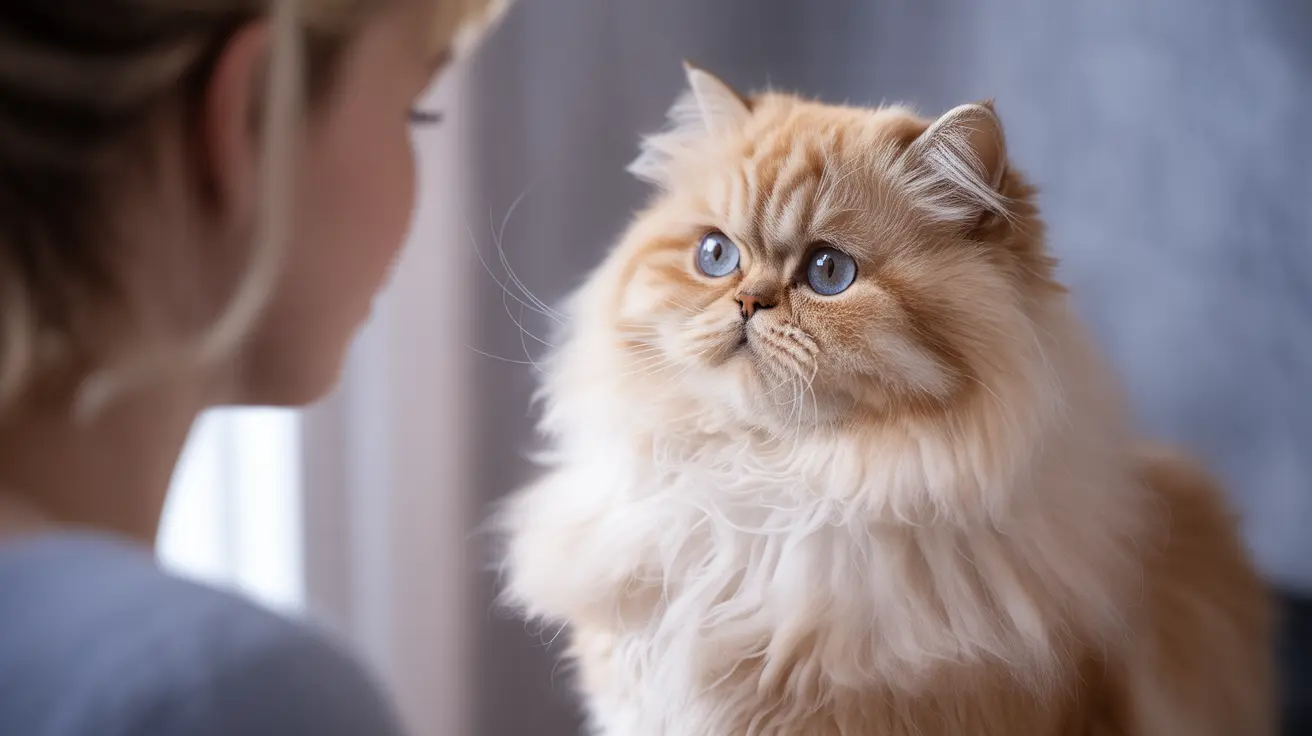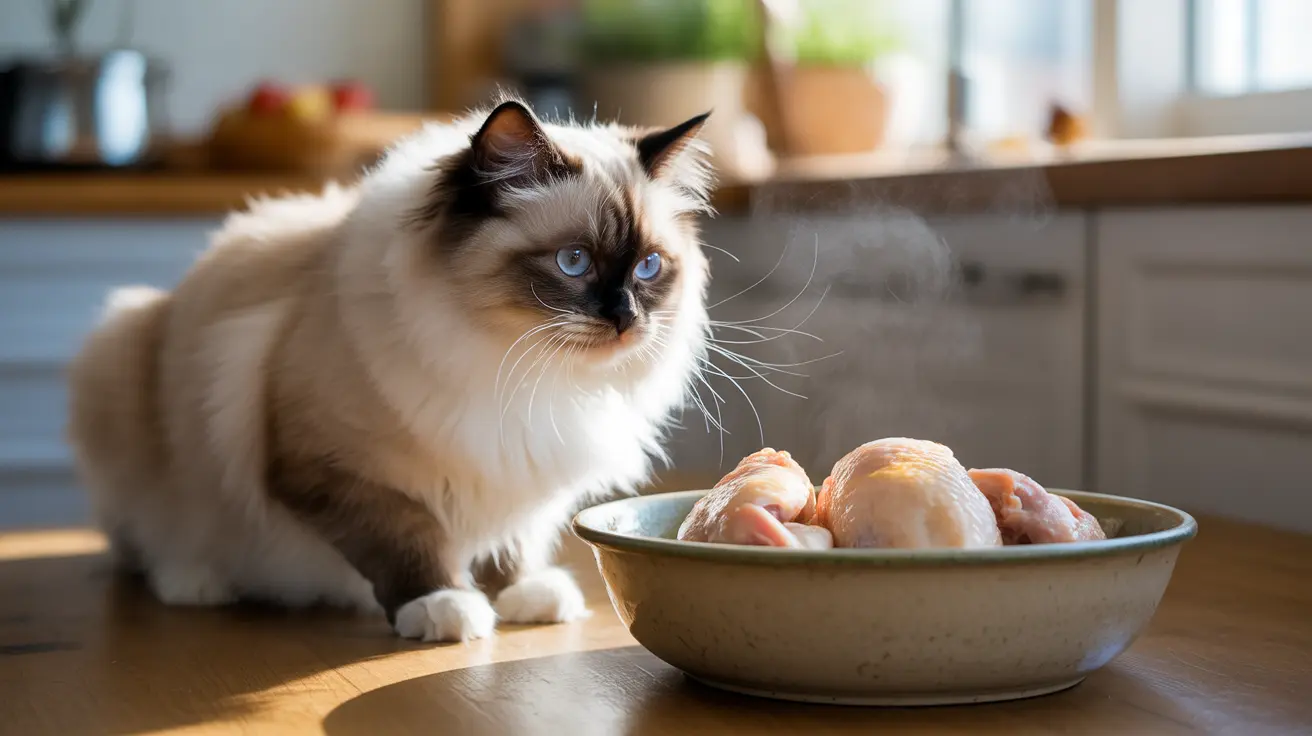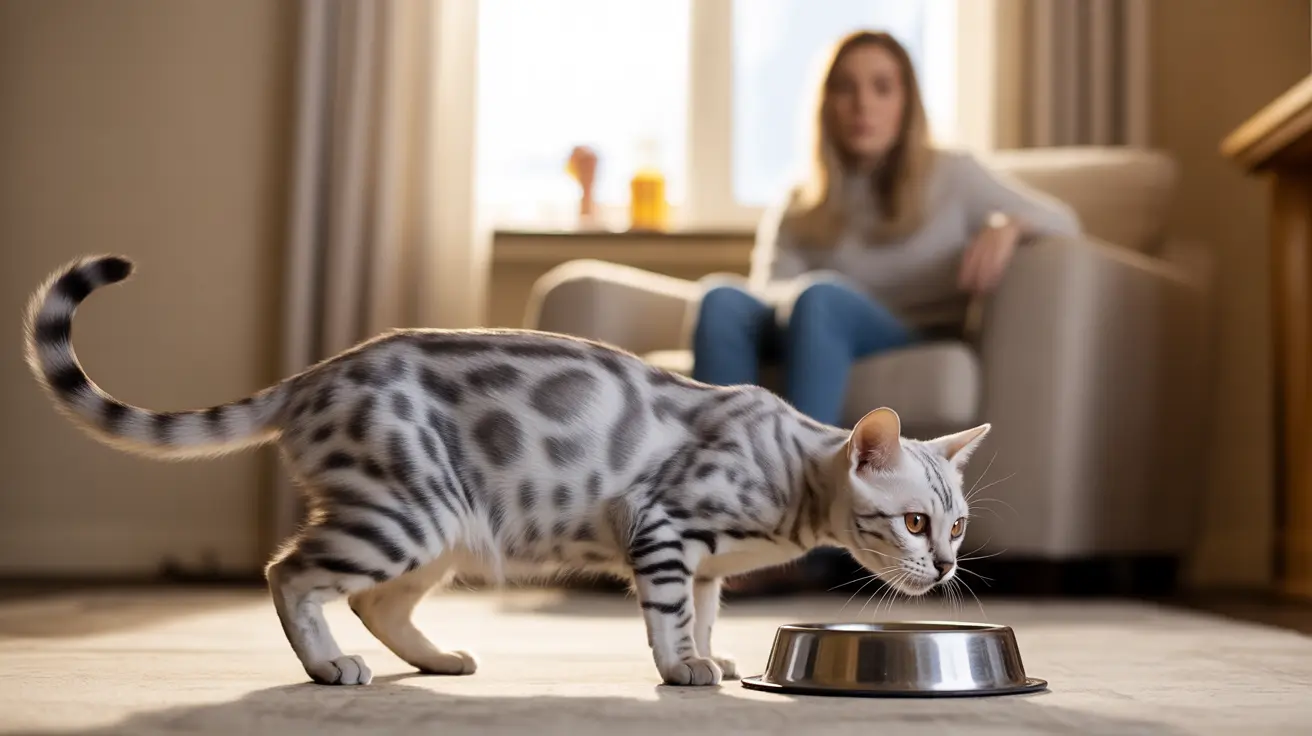How Selective Breeding for Flat Faces Impairs Communication in Cats: Understanding the Hidden Cost of "Cute" Features
The rise of flat-faced cat breeds like Persians, Exotic Shorthairs, and Scottish Folds has captured hearts worldwide, with celebrities like Taylor Swift and Ed Sheeran popularizing these distinctive-looking felines. However, recent scientific research reveals a troubling consequence of our preference for these "cute" features: selective breeding for flat faces may have significantly impaired cats' ability to communicate effectively through facial expressions. This disruption in natural feline communication affects not only how cats interact with humans but also how they communicate with each other, potentially leading to misunderstandings and welfare concerns.
Understanding the impact of selective breeding on facial communication in flat-faced cats is crucial for current and prospective cat owners, veterinarians, and anyone interested in feline welfare. As we explore this complex issue, we'll examine how human preferences for infant-like features have unintentionally compromised one of cats' most important social tools: their facial expressions. The implications extend far beyond simple miscommunication, affecting pain assessment, veterinary care, and overall quality of life for these beloved pets.
Understanding Brachycephaly and Its Effects on Feline Anatomy
Brachycephaly, literally meaning "short head," refers to the flattened facial structure that characterizes breeds like Persians, Exotic Shorthairs, and Scottish Folds. This condition results from selective breeding practices aimed at creating features that humans find appealing—large, prominent eyes, shortened muzzles, and round faces that trigger our caregiving instincts through what scientists call the "baby-schema effect."
The anatomical changes associated with brachycephaly extend far beyond cosmetic appearance. These cats suffer from brachycephalic airway syndrome, characterized by narrowed nostrils, small nasal passages, and elongated soft palates that cause significant breathing difficulties. Their large, protruding eyes often cannot close fully, leading to corneal inflammation, corneal sequestrum, and constant eye discharge due to shortened tear ducts that cannot function properly.
Dental malformations represent another serious consequence of shortened muzzles. The compressed facial structure causes misaligned teeth and creates difficulties with eating, making these cats prone to dental disorders such as tooth resorption and periodontal disease. Additionally, the deep facial skin folds common in breeds like Persians increase the risk of bacterial or fungal skin infections and dermatitis, requiring constant vigilance and care from owners.
How Facial Structure Changes Impair Feline Expression
A groundbreaking study published in Frontiers in Veterinary Science analyzed nearly 2,000 cat faces from various breeds and made a startling discovery: many flat-faced breeds appeared to display more "pain-like" expressions even when not in distress, compared to breeds with naturally proportioned faces. The research found that Scottish Fold facial features scored higher for pain-like expressions than domestic short-haired cats that were actually experiencing pain.
The structural changes in brachycephalic cats alter key facial landmarks that are essential for normal feline communication. The shortened muzzle, enlarged eyes, and flattened face reduce the range and subtlety of expressions that cats typically use to convey their emotional and physical states. This anatomical compromise means that what appears as a neutral expression in a flat-faced cat may be interpreted as distress or pain by both humans and other cats.
Dr. Lauren Finka from Nottingham Trent University, who led the research, explained that human preference for features we perceive as cute or relatable may have unintentionally disrupted cats' ability to communicate clearly. This disruption affects the complex system of facial signals that cats have evolved over thousands of years to interact with their environment and social groups effectively.
Comparing Communication Abilities Across Cat Breeds
The communication differences between flat-faced cats and those with more natural facial structures are striking. Cats with mesocephalic (proportioned) or dolichocephalic (elongated) faces maintain a full range of facial expressions that allow for nuanced communication. These cats can effectively use subtle changes in ear position, eye shape, whisker positioning, and mouth configuration to convey a wide spectrum of emotions and intentions.
In contrast, flat-faced breeds face significant limitations in their expressive capabilities. Their compressed facial features restrict the movement and positioning of key communication elements, resulting in expressions that may be consistently misinterpreted by both human caregivers and fellow cats. This limitation is particularly problematic in multi-cat households, where clear communication is essential for maintaining social harmony and preventing conflicts.
The research comparing different skull types revealed that cats with natural facial proportions showed clear, readable expressions that accurately reflected their internal states. However, brachycephalic cats often displayed expressions that suggested pain or distress even during routine, non-stressful situations, creating a fundamental disconnect between their actual condition and their apparent emotional state.
Reading Body Language and Behavior in Flat-Faced Cats
Given the compromised facial communication abilities of brachycephalic cats, owners must develop alternative strategies for understanding their pets' emotional and physical states. Focusing on body language and behavioral cues becomes crucial for accurate interpretation of these cats' needs and wellbeing.
Key behavioral indicators to monitor include tail position and movement, overall body posture, vocal patterns, eating and drinking habits, and activity levels. Flat-faced cat owners should pay particular attention to changes in routine behaviors, as these may be more reliable indicators of distress than facial expressions. For instance, a cat that suddenly becomes less active, changes eating patterns, or shows altered sleep behaviors may be experiencing discomfort that isn't clearly communicated through facial expressions.
The importance of behavioral assessment extends to veterinary care, where accurate pain evaluation is critical. Veterinarians and cat owners must rely more heavily on objective measures such as vital signs, response to gentle palpation, and behavioral changes rather than depending solely on facial expressions to assess pain levels in brachycephalic breeds.
Ethical Considerations and Welfare Implications
The welfare implications of breeding cats for extreme facial features raise significant ethical questions about our responsibilities as pet owners and breed enthusiasts. A 2023 study surveying 278 owners of brachycephalic cats revealed that most were unaware of breed-related health disorders before acquiring their pets, highlighting a concerning knowledge gap in the pet-owning community.
The concept of cognitive dissonance plays a role in perpetuating these breeding practices, as owners may underestimate their cats' health problems to reduce the discomfort associated with owning inherently unhealthy breeds. This psychological mechanism can lead to the normalization of suffering, where serious health issues are dismissed as typical breed characteristics rather than welfare concerns that require addressing.
Despite frequent veterinary visits and higher care costs, brachycephalic cat owners often report satisfaction with their pets, influenced by the strong emotional bond these cats can form with their caregivers. However, this satisfaction shouldn't overshadow the fundamental welfare issues inherent in extreme brachycephalic breeding, which result in shorter, less comfortable lives requiring extensive medical intervention.
Choosing Healthy Cat Breeds and Reputable Breeders
For prospective cat owners concerned about communication and welfare issues, careful breed selection and breeder evaluation are essential. Experts recommend avoiding cats with exaggerated brachycephalic features and instead choosing breeds with more moderate facial structures that maintain natural communication abilities while still providing the desired companionship qualities.
When evaluating breeders, look for those who prioritize health testing, maintain detailed health records of breeding cats, and are transparent about potential breed-related issues. Reputable breeders should be willing to discuss the health challenges associated with their breeds and provide evidence of efforts to minimize these problems through responsible breeding practices.
Consider breeds with less extreme features or mixed breeds that may have inherited better facial proportions while still maintaining appealing personality traits. Many cats in shelters and rescue organizations offer the same companionship benefits without the health complications associated with extreme breeding practices.
Impact on Veterinary Care and Pain Management
The communication challenges faced by flat-faced cats have significant implications for veterinary care and pain management. When cats cannot effectively communicate their discomfort through facial expressions, veterinarians must rely more heavily on alternative assessment methods, potentially leading to delayed diagnosis or inadequate pain management.
The study's finding that flat-faced cats may appear to be in pain even when comfortable creates additional challenges for medical professionals. Veterinarians treating brachycephalic breeds must develop specialized skills in reading subtle behavioral and physical cues that might indicate actual distress versus the breed's naturally pain-like appearance.
This situation emphasizes the need for enhanced owner education and improved veterinary protocols specific to brachycephalic breeds. Regular health monitoring, preventive care, and owner awareness of alternative communication methods become even more critical for ensuring the welfare of these cats throughout their lives.
Frequently Asked Questions
Can flat-faced cats communicate at all, or are they completely unable to express themselves?
Flat-faced cats can still communicate, but their ability to do so through facial expressions is significantly impaired compared to cats with natural facial proportions. They rely more heavily on body language, vocalizations, and behavioral cues to express their needs and emotions. Owners must learn to read these alternative communication methods to understand their cats effectively.
Why do flat-faced cats always look like they're in pain even when they're not?
The compressed facial structure of brachycephalic cats alters their natural facial landmarks, causing their neutral expressions to resemble the pain expressions of other cats. This occurs because the shortened muzzle, enlarged eyes, and flattened features restrict the normal range of facial muscle movement that cats use for communication.
Are there any flat-faced cat breeds that don't have communication problems?
All cats bred for extreme brachycephalic features will experience some degree of communication impairment, though the severity may vary among individuals and breeds. Cats with less extreme flat-faced features may retain more communication ability than those with severely compressed faces, but the fundamental issue persists across all brachycephalic breeds.
How can I tell if my flat-faced cat is actually in pain versus just appearing that way?
Focus on behavioral changes rather than facial expressions. Look for alterations in eating habits, activity levels, sleeping patterns, litter box usage, and social interactions. Physical signs like changes in posture, reluctance to move, or unusual vocalizations are more reliable indicators of actual pain in brachycephalic cats.
Do flat-faced cats have trouble communicating with other cats?
Yes, flat-faced cats may experience communication difficulties with other cats, particularly in multi-cat households. Their inability to display clear facial expressions can lead to misunderstandings and potential conflicts, as other cats may misinterpret their intentions or emotional states based on their altered facial appearance.
Should I avoid adopting a flat-faced cat altogether?
The decision should be based on your ability to provide specialized care and your commitment to learning alternative communication methods. If you choose a flat-faced cat, be prepared for potentially higher veterinary costs, more intensive health monitoring, and the need to develop skills in reading body language and behavioral cues rather than relying on facial expressions.
Can breeding practices be improved to maintain cute features while preserving communication abilities?
Ethical breeding practices that prioritize health and natural communication abilities over extreme features could help, but it requires a fundamental shift away from the most exaggerated brachycephalic traits that cause these problems. Moderating facial features while maintaining breed characteristics represents the best compromise between human preferences and feline welfare.
Conclusion
The impact of selective breeding on facial communication in flat-faced cats represents a complex intersection of human preferences, animal welfare, and unintended consequences of our desire for particular aesthetic traits. While these cats undoubtedly form strong bonds with their owners and can live fulfilling lives, the communication challenges they face highlight the importance of considering welfare implications when making breeding and purchasing decisions.
As we move forward, the responsibility lies with breeders, veterinarians, and cat owners to prioritize feline welfare while acknowledging the deep emotional connections these cats can provide. By focusing on less extreme features, supporting ethical breeding practices, and developing better understanding of alternative communication methods, we can work toward a future where cats can maintain both their appeal to humans and their natural ability to express themselves clearly and effectively.






